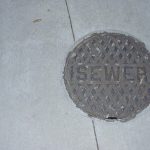Water damage can be the worst nightmare for property owners as it can flood your residential or commercial property. It can be catastrophic whether the flooding is due to a pipe burst, an overflowing bathtub, or a natural disaster. Water inside your property can cause unexplainable problems, from water damage to the growth of mold and mildew. While excess water can damage your valuable belongings, the aftermath of water damage is the presence of mold spores and mildew that is noticed after the floodwater recedes. Moreover, the cost of cleaning the property after a flood can increase significantly depending on the severity of the flood and the extent of damage it has caused to the property. When you experience a severe flood in your home, many things might get damaged due to the water. However, carpets are one of the most important and valuable belongings that get damaged. A flooded basement or a home raises a serious concern about whether you should replace or restore the carpet without exposure to any risk. Water-drenched carpet is the last thing that any homeowner wants to experience because it can lead to many serious problems while causing damage to the valuable carpet. The growth of mold and mildew adds to the woes because these are known to cause serious health problems to the people living in the household.
Different causes of flooding at home
Broken sump pump
Storm sewer backup
Water leakage
Overflowing stream or river
Faulty appliance
Burst water pipe
Seepage through walls or foundation
Irrigation leakage
Can my carpet and pad be saved after a flood?
Saving every item of your home is extremely crucial, and you need to race against time to keep the carpet because it can get damaged easily. Regardless of the cause of flooding, it is important to save your carpet and its pad from further damage but acting quickly to save the carpet. It would be best to protect the rug and the giant padding underneath. Since the flood water is contaminated by all kinds of bacteria, fungi, and other harmful substances, you need to determine whether you can save the carpet based on the water damage caused by black or grey flood water. Water cleanup is critical, and drying the carpet is essential to protect your valuable belongings.
Act immediately
After flooding, you need to wait until the water level recedes to start with the cleanup task. You cannot wait for long because delaying this process will lead to the growth of mold and mildew. If you want to protect and save your carpet, you should act quickly before mold growth occurs. While it might take up to 72 hours for the mold to grow at the affected place, there are instances when it can also take as little as 24 hours for it to start developing. This depends on the kind of flood water that has entered your home, and you will also need to decide whether the carpet can be saved or not.
Consider the source of flooding
Whether you can save your carpet or pad after a flood depends on the flooding source. You can restore the flood-damaged carpet and pad if it was damaged due to clean water lawn runoff or basement seepage. In this case, the rug is clean, and you can quickly dry and clean it and its pad so that you can use it in the future without any health risks. On the other hand, if the carpet has been impacted by sewage-contaminated flood water, it should be discarded as soon as possible for health and safety reasons. Grey and black water are known to contain infectious organisms that can lead to life-threatening health conditions. therefore, knowing the source and kind of flood water is very important for assessing whether carpets and pads can be saved or not.
Condition of the carpet
The cost of replacing carpets and padding can be very high; hence, you need to clean the carpets successfully to use them in the future. To salvage the carpet, you also need to look at its current condition and age. If water damage has worsened the carpet’s condition, then it is best to replace the carpet with a new one. If you can’t bear the cost of replacing the carpet, then you are placing the health of your loved ones at risk by using the water-logged carpet after the flood. Unwanted fungal and bacterial growth can also cause long-lasting consequences; thus, you need to determine whether the carpet is salvageable before making the final decision.
Inspect the carpet and pad
If you want to save the carpet, you should inspect it and its underneath padding to check the extent of the damage. If the padding is fully soaked in flood water, you have no option but to replace it because it cannot be dried. Also, check for wrinkling and the overall shape of the carpet after it has been subjected to water damage to decide whether you can keep it or have to discard it.
Look for mold growth
Floods offer a perfect environment for molds to grow and thrive. After your carpet has been wet due to flooding, mold will develop in about 24 to 72 hours. The best way to save the carpet is to act quickly to prevent further mold growth, and for this, you need to clean the areas of the carpet that have mold spores.
The dangers of wet carpets
The most significant danger after flooding is mold, which can damage the carpet and its padding. The growth of mold takes place quickly because of the humid environment provided by the wet carpet. You cannot overlook this issue because mold poses major health risks, including asthma and allergies. When you notice a bad odor emitting from your home, it is a sign that your home has been affected by mold growth. It is important to clean up and eliminate mold at the earliest so that your fast action can save valuable belongings.
Steps for saving the carpet
The first step to saving your carpet and pad is to extract water immediately after it recedes. Time is an important factor in water damage situations, and you can save everything if you act quickly and wisely. Using a bucket or pump can be a good way of removing excess water from the carpet.
The next step is to dry the carpet. For this, you have to open the windows and switch on the fans so that air circulation can accelerate the drying process. Dehumidifiers are also an excellent way of drying the carpet, and you can rent this equipment so that it will make the drying process quick and effective.
Although the carpet can be restored after thoroughly cleaning and drying, you must replace the padding. After water damage, the carpet pads cannot be dried and used again, so it is advisable to replace the padding to continue using the carpets as before.
The cleaning and drying process might take a few days before you can use the carpet again. It is important to be patient during this time.
Installing new padding is essential because it becomes brittle when it is dried after getting wet in flood water. This will lead to the padding breakdown and deterioration after exposure to moisture and water damage. Therefore, it is not advisable to use the carpet pads and replace them with new ones so that you can continue using the carpet in the future. Investing in good quality carpet pads that prevent the carpet from wear and tear is essential for the best cushioning and support.
If you want to salvage your carpet and don’t know how to proceed, then it is best to seek professional assistance. Contact a local plumbing company rather than trying to do this task yourself, as professionals have the expertise and knowledge to deal with water damage. A valuable carpet can easily be cleaned, dried, and sanitized by professionals who use professional quality tools and equipment to perform the task. Professionals will start the cleanup process after wearing safety gear and clothes so that mold, mildew, or any danger does not impact them in any manner. Flood water is known to be hazardous for the health of your loved ones, and the best way to restore the carpet is by acting quickly and seeking professional help. After cleaning and drying the carpet, the professionals will sanitize the entire area to ensure that nothing can hurt the health of the homeowners.





